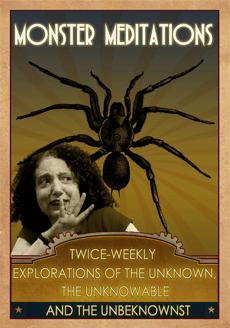It’s not strange to find me wandering around a museum. I’m usually focused on the art, but sometimes I turn my attention toward the patrons. I listen to snippets of conversation (great training for writing dialog), check out the fashions (weird, wonderful and everything in-between), or simply observe how other people interact with art.
I’m definitely not the first one to observe the “museum-selfie” phenomenon. For a certain number of museum visitors a self-portrait photo with Van Gogh’s Starry Night or Salvador Dali’s The Persistence of Memory (AKA the melting clock painting) is a required Museum of Modern Art experience. I was amused by the conversation of a group of teenagers gathered around the Dali. After their requisite photo-opp, one of the girls pointed out some of exquisite details in the painting —the ants on the clock, etc. I couldn’t help wondering how Dali might feel about their need to be IN his popular masterpiece. I think he would like it (and LIKE it on Facebook, too).
Other museum patrons seem unable to see a work of art unless they see it through the lens of a camera — or the camera on their phone. I sometimes snap photos of both the art work and the legend with the artist’s details, as it’s faster than taking notes and less weird than my rudimentary sketching, but I’m acutely aware of the difference between the view through the lens and the experience of just looking — really looking— at a work of art.
Right now, virtually every museum offers stand alone audio guides or guided tours on phone Apps to enhance the experience of art. I won’t argue with the educational aspects of these “enhanced” art tours, but all the facts about the artist’s life, the context of the work’s creation and how the museum obtained the work can also get in the way of simply seeing and experiencing art. It’s been a long time (college) since my responses to art have been graded. Art history classes stuffed my head full of knowledge about what I see, but all of that STUFF gets brushed aside when I simply look.
There are times when I enhance my experience (exhibits of unfamiliar ancient artifacts, etc.), but still… I’m most likely to be inspired and awakened if I simply allow myself to meet a work of art one-on-one. This is an experience analogous to reading. The reader meets the words of the story and sometimes, something wonderful happens. No enhancements needed!





I know it’s never possible to completely switch off the commentary running through our heads as we experience art, but I disapprove of anything that adds to that disconnect. Art is emotion, and probably the closest any of us will ever come to true telepathy. Why would we diminish that experience by filtering it through a cognitive process?
Switch the conscious brain off, not on. 🙂
Switch it off… at least for a few minutes at a time… Perhaps that really would help people connect to the art and shed the layers and layers of filters that interpret ART for us. I find some of what I learned in Art History classes and continue to read in Art Books to be helpful in enjoying art BUT the emotional responses are the primary connection.
The other day I went to a retrospective of Yoko Ono’s work from the 1960sa and wound up whizzing through it all very quickly. It was all about context and history. I realized that conceptual art is like fish — something special when its fresh but later on it’s not that compelling and it even stinks! If I were back in school, I’d probably write a post putting her green apple on a plexiglass pedestal and canvas on the floor with the instructions that you should walk on this piece of art, in the context of Duchamp’s urinal. Of course Duchamp still manages to keep my attention.
Maybe it’s all about LOOKING as well as SEEING.
Ahh yes, meeting a work of art one-on-one needs to be the starting point of an experience with art, but it’s one that I think most people need to be taught how to cultivate. My art teacher friend takes her classes on a yearly field trip to the Boise Art Museum every year, and year she comes back frustrated. There is too much to compete with kids’ attention. Enjoy art or arts’ sake? Nah, it’s so much more fun to make it interactive 😉 It was a very meta moment when I saw The Scream at the MoMa and I was taking pictures of people taking pieces of Munch’s masterpiece. Not to mention the many younger people who had to copy the pose in the painting. Even many everyday photos now get posted with some sort of filter effect.
That’s why I was so happy when one of the teenagers posting in front of the Dali painting began pointing out some of the delicate details you simply can’t see at first. (The painting is small and there are tiny ants and a fly with perfect wings, etc.) You have to go up close and get “into” the painting to even begin to see it. That group did the selfie thing and THEN they connected to the work. Still, your MoMA story is a hoot! I remember that Munch show. The crowds flocked around The Scream and I spent most of my time in front of the paintings that were less well known. Even in a crowded room, I was alone communing with The Vampire. lol…
Maybe we have to figure out how to teach that there is FUN in the interactivity of reading and of looking at a work of art? Perhaps we need a new definition of “interactive” — or a new definition of fun?